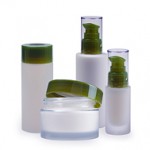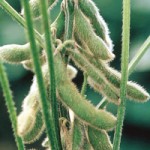Lavender & Tea Tree Oil Rebuttle
 This article is in response to a New England Journal of Medicine Article; “Prepubertal Gynecomastia Linked to Lavender & Tea Tree Oil”
This article is in response to a New England Journal of Medicine Article; “Prepubertal Gynecomastia Linked to Lavender & Tea Tree Oil”
In a recent report, a correlation is alleged between commercial products containing lavender and tea tree oils and breast growth in young boys. Three cases were seen in boys aged 4-7, who had all been using such products. In each case, the breast growth reduced to normal parameters within several months of ceasing to use the products. Subsequent laboratory testing showed that both essential oils had estrogen-like properties (Henley et al 2007).
In the report, no information is given about any of the constituents of the products used. The information given about product use is sparse, and we do not know for certain whether any of the products contained lavender or tea tree oils, since they were not analyzed by the researchers.
Case one
In the first case, “The patient’s mother reported applying a “healing balm” containing lavender oil to his skin starting shortly before the initial presentation.” No further details of the product or its use are given, but a healing balm sounds like something that might only be applied to a small area of skin. If so, then it is unlikely that any ingredient could have entered the boy’s blood in sufficient concentration to cause gynecomastia within a short time period.
Case two
In the second case, a styling hair gel was applied to the hair and scalp every morning, along with regular use of a shampoo. Both tea tree and lavender oil are cited on the ingredient list of both products. In a subsequent website report, it is claimed that the two hair products used in this case were manufactured by Paul Mitchell, and that these were analysed by a competitor. The shampoo was said to contain “very low concentrations” of tea tree oil, and the content in the hair gel was “virtually undetectable”. Lavender oil concentration was not checked (Neustaedter 2007).
Dermal absorption of fragrance from shampoo application has been estimated to be 80 times less than that from body lotion (Cadby et al 2002). If the website report is genuine, considering that shampoo is a wash-off product, and that there was only a negligible amount of tea tree oil in the hair gel, tea tree oil can be ruled out as a possible cause of this boy’s gynecomastia. However, liberal use of a hair gel rich in lavender oil could result in moderate dermal absorption of lavender oil constituents (Cal 2006).
Case three
The third case involved “lavender-scented soap, and intermittent use of lavender-scented commercial skin lotions”. This sounds as if there may not be very much natural lavender oil present. Further, soap is a wash-off product, and the use of lavender lotion is described as “intermittent”. Whether any absorption of genuine lavender oil took place at all seems doubtful.
Since dermal absorption of soap fragrance is some 266 times less than that from body lotion, it is virtually impossible that the fragrance in a soap could be absorbed in sufficient quantity to cause any physiological effect (Cadby et al 2002).
Of great interest is the statement that, in this third case, a fraternal twin used the same skin lotions, but not the soap, and did not develop gynecomastia. It would be reasonable to assume that, since the soap could not be responsible for the effect, and since the twin used the lotions without any problem, the gynecomastia in this third case must have been due to some cause other than essential oils.
The in vitro testing
The in vitro evidence shows weak but definite endocrine disrupting effects for both lavender and tea tree oils. The second case was the only one in which tea tree oil was involved. Tea tree oil was tested because it was deemed to be “chemically similar” to lavender oil. However, apart from the fact that both are essential oils, they have little in common chemically.
The composition of the essential oils tested is not given, nor is any other information about them, apart from the supplier. Since they do not appear to be organically grown, biocide content is a possibility.
Discussion
It is unusual in such reports not to name the products suspected as being responsible for the effects under discussion. In the circumstances, it is also curious that the labelled ingredients were not cited. It is even more surprising that no attempt was made to ascertain, retrospectively, whether any constituents of lavender or tea tree oil were detectable. If the products are not named, no one else can test them either.
Even assuming that one or both of the essential oils were present at some level, we do not know what quantities of essential oil constituents may have penetrated the skin, but we do know that transcutaneous absorption from fragrances takes some time. The amount that could find its way into the blood from a wash-off product such as a shampoo or soap is negligible, because the time of skin contact is so short. Skin absorption from tea tree and lavender oil constituents is measured in hours, not minutes, in and some instances even leave-on products result in minimal dermal penetration (Cal 2006, Reichling 2006).
The Henley et al report mentions that none of the boys had been exposed to any known endocrine disruptor, such as medications, oral contraceptives(!), marijuana or soy products. However, no mention is made of other known endocrine disruptors, such as organochlorine pesticides, PCBs, polychlorinated dioxins, alkyl phenols, pthalates and parabens (Darbre 2006). Both pesticides and phthalates have been found in essential oils, and both phthalates and parabens are commonly found in cosmetic products.
It is, therefore, entirely possible that other ingredients in the products caused the gynecomastia. Pesticides, PCBs and dioxins are found in the environment, often in food,
and it is also possible that some local surge of environmental hormone disruptors caused these cases in Colorado.
No attempt was made to identify the constituent(s) responsible for the in vitro effect, but it is reasonable to expect that any hormonal action in an essential oil would be due to one or two constituents, or even contaminants. It is noteworthy that, while in vitro hormonal effects from essential oil constituents have been previously reported, these are generally very weak, and have been estimated as being at least 10,000 times less potent than 17beta-estradiol (Howes et al 2002).
There is no evidence that the effect seen in vitro would take place in vivo, and much more research would be needed before any definite determinations could be made. Many estrogenic substances have previously been identified from plant sources, and very weak activity is typical of these phytoestrogens (Chadwick et al 2006, Howes et al 2002).
Conclusions
As the report states, breast growth in pre-pubertal boys is extremely uncommon, yet three cases are reported within a short period of time, and all in the same clinic. Considering that some 200 tonnes per annum are produced of both lavender and tea tree oil, that most of this goes into personal care products, and that very little of the evidence presented for these 3 cases is convincing, the press reports of caution are premature.
Even if one or more of these cases was linked to product use, any connection with either lavender or tea tree oil is unproven. Other known endocrine disrupting ingredients in the products could have played a role. Furthermore, we do not know what other factors, such as dietary or environmental, may have played a part. The in vitro work reported by Henley et al (2007) does indicate a hormonal effect. However, this cannot be extrapolated to estimate actual human risk, especially without knowing more about the essential oil constituents causing the in vitro effects seen.
No connection was established between the in vitro work and the three cases, and the case for tea tree oil having an effect on prepubertal gynecomastia is especially weak. Phytoestrogens generally have a very weak hormonal activity, and it is implausible that the amounts of essential oil that enter the body from product use would have a significant effect. Further research will hopefully clarify these issues.
References
Cadby PA, Troy WR, Vey MG 2002 Consumer exposure to fragrance ingredients: providing estimates for safety evaluation. Regulatory Toxicology & Pharmacology 36: 246-252
Cal K 2006 How does the type of vehicle influence the in vitro skin absorption and elimination kinetics of terpenes? Archives of Dermatological Research 297: 311-315
Chadwick LR, Pauli GF, Farnsworth NR 2006 The pharmacognosy of Humulus lupulus L. (hops) with an emphasis on estrogenic properties. Phytomedicine 13: 119-131
Darbre PD 2006 Environmental oestrogens, cosmetics and breast cancer. Best Practice & Research Clinical Endocrinology & Metabolism 20: 121-143
FMA 2007 http://www.fmafragrance.org/sub_pages/020107henleyresponse.pdf Henley DV, Lipson N, Korach KS, Bloch CA 2007 Prebubertal gynecomastia linked to lavender and tea tree oils. New England Journal of Medicine 365(5): 479-485
Howes M-J R, Houghton P J, Barlow D J et al 2002 Assessment of estrogenic activity in some common essential oil constituents. Journal of Pharmacy & Pharmacology 54:1521–1528
Neustaedter R 2007 http://www.cureguide. com/Natural_Health_Newsletter/Lavender_Dangers/lavender_dangers.html
Reichling J, Landvatter U, Wagner H, Kostka KH, Schaefer UF 2006 In vitro studies on release and human skin permeation of Australian tea tree oil (TTO) from topical formulations. European Journal of Pharmaceutics & Biopharmaceutics 64: 222-228
Copyright © Robert Tisserand 2007
See the original article.










